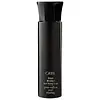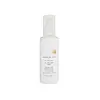What's inside
What's inside
 Key Ingredients
Key Ingredients

No key ingredients
 Benefits
Benefits

 Concerns
Concerns

 Ingredients Side-by-side
Ingredients Side-by-side

Cyclopentasiloxane
EmollientIsododecane
EmollientPhenyl Trimethicone
Skin ConditioningBis-Hydroxyethoxypropyl Dimethicone
EmollientBis-Hydroxy/Methoxy Amodimethicone
Parfum
MaskingPolysilicone-15
UV FilterPPG-3 Benzyl Ether Myristate
EmollientSilicone Quaternium-22
PPG-3 Myristyl Ether
EmollientArgania Spinosa Kernel Oil
EmollientPersea Gratissima Oil
Skin ConditioningRosa Canina Fruit Oil
EmollientOryza Sativa Bran Extract
Skin ConditioningHelianthus Annuus Extract
EmollientRosmarinus Officinalis Leaf Extract
AntimicrobialTocopherol
AntioxidantPentaerythrityl Tetra-Di-T-Butyl Hydroxyhydrocinnamate
AntioxidantBenzyl Benzoate
AntimicrobialLimonene
PerfumingHexyl Cinnamal
PerfumingLinalool
PerfumingCitral
PerfumingCyclopentasiloxane, Isododecane, Phenyl Trimethicone, Bis-Hydroxyethoxypropyl Dimethicone, Bis-Hydroxy/Methoxy Amodimethicone, Parfum, Polysilicone-15, PPG-3 Benzyl Ether Myristate, Silicone Quaternium-22, PPG-3 Myristyl Ether, Argania Spinosa Kernel Oil, Persea Gratissima Oil, Rosa Canina Fruit Oil, Oryza Sativa Bran Extract, Helianthus Annuus Extract, Rosmarinus Officinalis Leaf Extract, Tocopherol, Pentaerythrityl Tetra-Di-T-Butyl Hydroxyhydrocinnamate, Benzyl Benzoate, Limonene, Hexyl Cinnamal, Linalool, Citral
Cyclotetrasiloxane
EmollientCyclopentasiloxane
EmollientAlcohol Denat.
AntimicrobialParfum
MaskingPolyglyceryl-4 Isostearate
EmulsifyingHexyl Laurate
EmollientCetyl PEG/PPG-10/1 Dimethicone
EmulsifyingWater
Skin ConditioningCetearamidoethyldiethonium Succinoyl Hydrolyzed Pea Protein
CleansingHypnea Musciformis Extract
Skin ProtectingGlycerin
HumectantSargassum Filipendula Extract
Skin ProtectingGelidiella Acerosa Extract
Skin ProtectingSalvia Hispanica Seed Oil
MoisturisingSorbitol
HumectantCaprylic/Capric Triglyceride
MaskingXanthan Gum
EmulsifyingHydrolyzed Keratin
HumectantCoco-Glucoside
CleansingCarrageenan
Algin
MaskingLitchi Chinensis Pericarp Extract
Skin ConditioningChitosan
Cyclotetrasiloxane, Cyclopentasiloxane, Alcohol Denat., Parfum, Polyglyceryl-4 Isostearate, Hexyl Laurate, Cetyl PEG/PPG-10/1 Dimethicone, Water, Cetearamidoethyldiethonium Succinoyl Hydrolyzed Pea Protein, Hypnea Musciformis Extract, Glycerin, Sargassum Filipendula Extract, Gelidiella Acerosa Extract, Salvia Hispanica Seed Oil, Sorbitol, Caprylic/Capric Triglyceride, Xanthan Gum, Hydrolyzed Keratin, Coco-Glucoside, Carrageenan, Algin, Litchi Chinensis Pericarp Extract, Chitosan
 Reviews
Reviews

Alternatives
Ingredients Explained
These ingredients are found in both products.
Ingredients higher up in an ingredient list are typically present in a larger amount.
Cyclopentasiloxane, or D5, is a silicone used to improve texture of products and trap moisture.
D5 is considered lightweight and volatile. Volatile means it evaporates quickly after application. Once evaporated, D5 leaves a thin barrier that helps keep skin hydrated.
It is also an emollient. Emollients help soften the skin and prevent water loss. Silicones create a silky texture in products. D5 helps other ingredients become more spreadable.
Studies show D5 is safe to use in skincare products. We recommend speaking with a skincare professional if you have concerns.
Learn more about CyclopentasiloxaneParfum is a catch-all term for an ingredient or more that is used to give a scent to products.
Also called "fragrance", this ingredient can be a blend of hundreds of chemicals or plant oils. This means every product with "fragrance" or "parfum" in the ingredients list is a different mixture.
For instance, Habanolide is a proprietary trade name for a specific aroma chemical. When used as a fragrance ingredient in cosmetics, most aroma chemicals fall under the broad labeling category of “FRAGRANCE” or “PARFUM” according to EU and US regulations.
The term 'parfum' or 'fragrance' is not regulated in many countries. In many cases, it is up to the brand to define this term.
For instance, many brands choose to label themselves as "fragrance-free" because they are not using synthetic fragrances. However, their products may still contain ingredients such as essential oils that are considered a fragrance by INCI standards.
One example is Calendula flower extract. Calendula is an essential oil that still imparts a scent or 'fragrance'.
Depending on the blend, the ingredients in the mixture can cause allergies and sensitivities on the skin. Some ingredients that are known EU allergens include linalool and citronellol.
Parfum can also be used to mask or cover an unpleasant scent.
The bottom line is: not all fragrances/parfum/ingredients are created equally. If you are worried about fragrances, we recommend taking a closer look at an ingredient. And of course, we always recommend speaking with a professional.
Learn more about Parfum